With usage and cultivation spanning three civilizations, you have to wonder how lettuce (Lactuca sativa) has stood the test of time. A vegetable native to the eastern Mediterranean region and western parts of Asia, romaine lettuce is known for its versatility in many cuisines.
Romaine lettuce is the most nutrient-rich of all lettuce varieties. The darker color not only indicates its richness in flavor, but in nutrients, too. Learn more about the positive impacts of romaine lettuce to your health.
What Is Romaine Lettuce?
Romaine lettuce is a head-forming lettuce. It has deep green and long leaves with a crisp texture and distinct taste. It’s one of four popular lettuce varieties, alongside crisphead, butterhead and leaf lettuce. Just like most lettuce, once romaine lettuce leaves are broken, a white and milky liquid is excreted that’s responsible for its slightly bitter flavor.
Romaine lettuce is also called Cos, because it was said to have originated from the Greek island of the same name located off the coast of Turkey in the Aegean sea. In the U.S., California is considered to be the country’s “Lettuce Capital,” since Spanish missionaries planted lettuce in the state as early as the 17th century.
Important Health Benefits Romaine Lettuce Has to Offer
These vitamins, minerals and phytonutrients contribute to romaine lettuce’s abilities in preventing or easing various health complaints:
| Vitamin A (mainly because of the high amounts of beta-carotene) | Minerals like chromium, calcium, copper, magnesium, manganese, iron, potassium and phosphorus |
| Vitamins C and K | Dietary fiber |
| Omega-3 fatty acids | Molybdenum |
| B vitamins B1, B5, B6, B7 and B9 |
An important benefit of romaine lettuce is its ability to improve heart health, because of the following:
- Vitamin C and beta-carotene: This tandem helps prevent cholesterol oxidation. Sticky oxidized cholesterol can build-up in the artery walls and form large plaques that can block off blood flow, and trigger a clot that can lead to a heart attackor stroke.
- Dietary fiber:It binds with bile salts in the colon and eventually expels these from the body. This forces the body to make more bile, which is created by breaking down cholesterol.
- Vitamin B9 or folic acid:This B vitamin is required to convert homocysteine, a damaging chemical, into other benign substances. Excessive amounts of homocysteine can directly damage blood vessels and raise your risk for heart attack and stroke.
- Potassium:This mineral can assist with reducing blood pressure levels and heart disease risk.
Vitamin A and beta-carotenes in romaine lettuce have antioxidant properties, with the former vital in maintaining healthy mucosa and skin and proper vision. Meanwhile, vitamin C in romaine lettuce may assist the body in forming a defense against harmful free radicals.
Romaine lettuce is also a good source of vitamin K that plays a big role in bone metabolism, by promoting osteoblastic activity in the bone cells and helping increase bone mass. This vitamin was also shown to assist Alzheimer’s disease patients by limiting neuronal damage in the brain.
You can count on romaine lettuce to deliver vital amounts of folate as well, one of the many co-factors that’s important in the enzyme metabolism required for DNA synthesis. Plus, because romaine lettuce is folate-rich, it’s highly recommended in a pregnant woman’s diet to help prevent neural tube defects in a baby.
Apart from beta-carotene, another carotenoid called zeaxanthin is present in romaine lettuce. It’s selectively absorbed into the retinal macula latea in your eye, delivering antioxidants and filtering UV rays that can damage the retina.
Research also showed that a diet rich in zeaxanthin and other carotenes can offer protection against age-related macular disease (ARMD), especially among older adults. Adding romaine lettuce to your diet can also help minimize your risk of osteoporosis, iron-deficiency anemia, cardiovascular diseases and Alzheimer’s disease.
Note: While lettuce can potentially provide you with the benefits mentioned above, remember that they contain less nutrients than other leafy greens. Hence, it’s advisable not to rely solely on lettuce as your nutrient source and to instead mix them up with other vegetables, such as microgreens or sprouts. Swapping lettuce for sprouts and/or microgreens will dramatically improve your nutrition and add more interesting flavors to your meal.
Common Uses of Romaine Lettuce
Romaine lettuce is a popular ingredient in salads, sandwiches, wraps and green smoothies, but it has significance in cultural and historical traditions as well.
The Greeks and Romans not only used romaine lettuce as food, but also valued it as medicine because of its therapeutic properties. Meanwhile, the Egyptians used lettuce to decorate tombs, and depictions of this vegetable were found carved in these burial grounds. In medieval Europe, romaine lettuce was heralded for its medicinal properties, as noted in various medieval texts.
Unani medicine, a system of healing and health maintenance in South Asia, used romaine lettuce to ease bilious eructation, disrupted blood pressure, appetite loss and insomnia. Romaine lettuce was also utilized as a tonic for the intestines and digestive system, and as a method to stop sexual urges.
The dried latex from the romaine lettuce was also used for inducing sleep and as nasal drops. It has sedative, anti-spasmodic and anodyne properties.
Romaine lettuce is a focal point in the Passover Seder, because of the leaves’ bitter flavor. This symbolizes the bitterness the Egyptians gave to the Israelites that they enslaved. On a happier note, lettuce is usually served on birthdays, New Year’s Day and other special occasions in China, since it’s said to bring good luck.
Make sure you purchase organic romaine lettuce — look for compact lettuce heads with crisp-looking and unwilted leaves and stem ends that aren’t too brown. Ideally, avoid lettuce with dark or slimy spots and/or brown or yellow discoloration on the leaves’ edges. You can purchase romaine lettuce any time of the year, as it’s available all-year round.
At home, wash and dry the romaine lettuce before storing in the refrigerator to eliminate excess moisture. To clean, remove outer leaves first. With one slice, cut off the bitter lettuce tips. Take the remaining leaves, chop to the desired size and discard the bottom roots. Rinse the lettuce and pat dry. If you have a salad spinner, use it to remove excess water.
Keep romaine lettuce in a plastic bag or wrap in a damp cloth. Place lettuce inside the refrigerator crisper, where it can last for five to seven days.
Refrigerating romaine lettuce is an ideal way to keep them fresh and nutrient-rich. There are four factors that may affect the nutrient composition of lettuce: length of storage time and exposure to air, light and heat. Given that there are nutrients in romaine lettuce that can be depleted when exposed to heat, refrigeration slows down nutrient loss.
Plus, remember to store romaine lettuce away from apples, bananas and pears. These produce ethylene, a substance that will prompt the leaves to brown.
How to Grow Romaine Lettuce at Home
Growing romaine lettuce at home is a good way to ensure you have a steady supply. It is a hardy and cool-weather crop that grows well during the spring and the fall in most regions, although lettuce seedlings can tolerate a light frost. Romaine lettuce can be grown on the ground or in containers.
This lettuce grows fastest in full sun, but it can tolerate shade. Ideal temperatures for growing fall between 45 to 80 degrees Fahrenheit. It’s vital to check the temperature though, since hot weather makes the leaves bitter, while cold conditions can freeze the lettuce.
Ideally, the soil’s pH level should be between 6.0 and 7.0, and must be humus-rich, moisture-retentive and well-drained with lots of nitrogen. Don’t forget to add organic compost matter or fertilizer to the plant to encourage growth.
Your best approach to planting romaine lettuce is to do so in small batches, and stagger plantings as these tend to grow quickly. According to Heirloom Organics, there are three ways you can plant romaine lettuce:
- Sowing: It’s done by transplanting or planting direct seeds in the early spring, as soon as you can work the soil. You can start early by preparing romaine lettuce beds in the fall, by incorporating manure or compost and raking the area smooth to make a fine seedbed.
Sow the seeds at a very shallow depth and cover with a thin layer of growing medium. This enables the seeds to germinate, since these require light to do so. You can sow additional seeds every two weeks for a continuous harvest throughout the growing season.
- Direct-seeding: Also recommended as soon as the ground can be worked, direct-seeding is done by placing the seeds in 1/4-inch deep holes that are an inch apart, in rows separated with a 12- to 18-inch gap.
- Transplanting: This is accomplished by sowing the seeds in 1-inch cells three to four weeks before transplanting outside. Reduce water and temperature three days prior to transplanting for the seedlings to harden and be able to survive temperatures as low as 20 degrees Fahrenheit.
Make sure romaine lettuce transplants are 10 to 12 inches apart, in rows 12 to 18 inches wide. Begin fertilizing plants three weeks after initial transplant.
For your lettuce to grow tender and succulent leaves, water them regularly, especially during dry weather. Because of the lettuce’s shallow root system, it’s advisable to maintain soil moisture to allow the plant to grow continuously. Mulching is another way to keep soil moist and prevent weeds from occurring (unless slugs are a problem). Don’t forget to plant row cover crops like chives or garlic, since these are able to:
- Protect very early plantings from cold weather
- Shield young plants from insects
- Shade crops when warm weather arrives, when supported with hoops
As the season progresses, plant more bolt-resistant lettuce. Increased moisture, stress and high temperatures (particularly at night) can encourage bolting. Make sure plants are located in areas with taller nearby plants, latticework or other screen/s, so they are shaded from heat.
To know when to harvest romaine lettuce, count 60 to 70 days after initial plantings. If you planted them during the fall, time the maturity of the lettuce around the time of first expected frost, since mature plants aren’t as tolerant to frost compared to seedlings. Furthermore, because mature plants tend to deteriorate quickly, watch your plants carefully.
When harvesting romaine lettuce, do so in the morning so it preserves the crispiness it acquires overnight.
To check romaine lettuce’s firmness, press down gently on the lettuce hearts using the back of your hand. Refrain from pitching these to prevent bruising. If the lettuce is firm, take a sharp knife and cut the heads below the lowest leaves. You can also harvest the lettuce by pulling the plants out by the roots.
Romaine Lettuce Nutrition Facts
If you’re still unconvinced about romaine lettuce’s capabilities, check out this chart. Apart from providing essential nutrients and vitamins, romaine lettuce is low in calories and high in water.
| Romaine Lettuce Nutrition Facts
Serving Size: 100 grams |
||
| Amt. Per Serving |
% Daily Value* |
|
| Calories | 17 | |
| Calories from Fat | 3 | |
| Total Fat | 0 g | 0% |
| Saturated Fat | 0 g | 0% |
| Trans Fat | ||
| Cholesterol | 0 mg | 0% |
| Sodium | 8 mg | 0% |
| Total Carbohydrates | 3 g | 1% |
| Dietary Fiber | 2 g | 8% |
| Sugar | 1 g | |
| Protein | 1 g | |
| Vitamin A174% | Vitamin C | 40% |
| Calcium3% | Iron | 5% |
*Percent Daily Values are based on a 2,000 calorie diet. Your daily values may be higher or lower depending on your calorie needs.

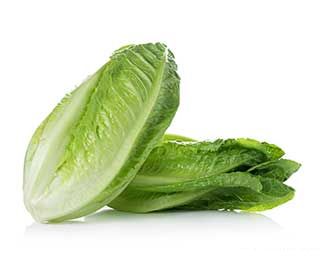
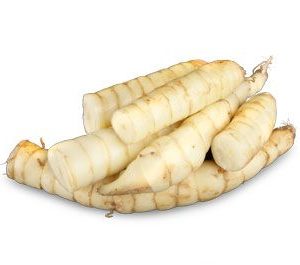
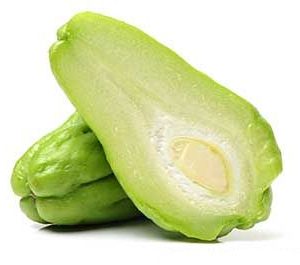
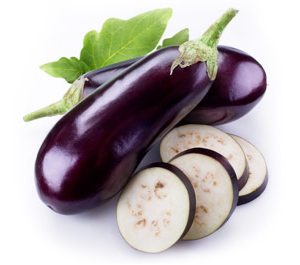
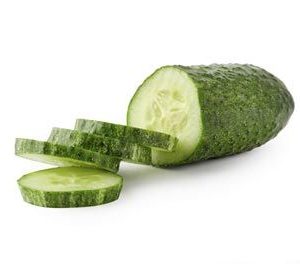
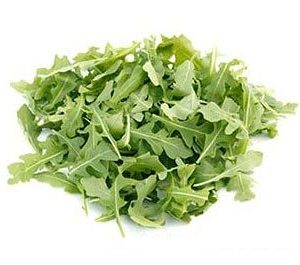
Reviews
There are no reviews yet.